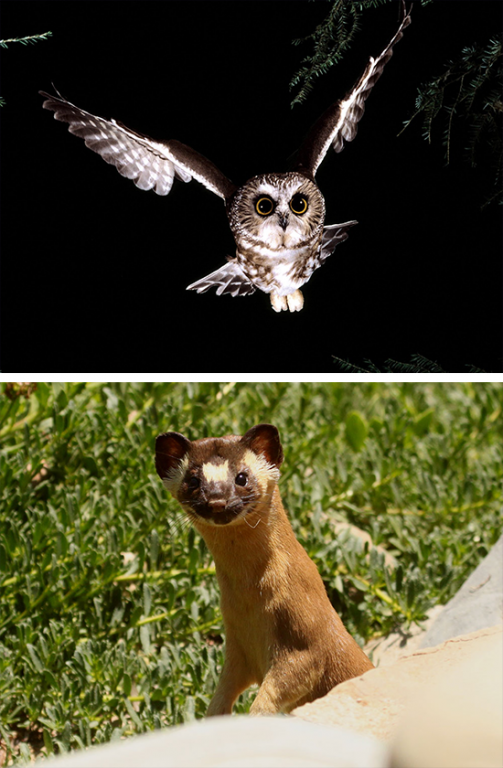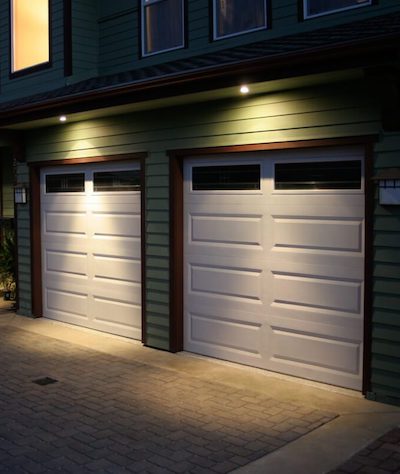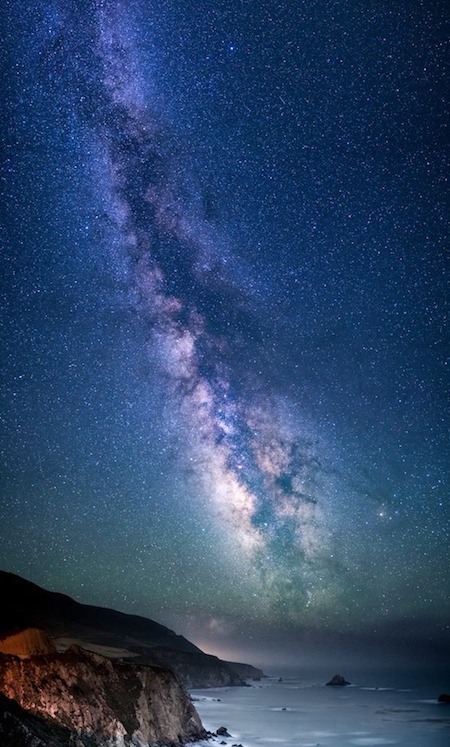DARK SKIES
5 REASONS
TO SUPPORT OUR DARK SKIES PROGRAM
Light pollution – the inappropriate use of artificial light at night – is an environmental pollutant that harms our planet and robs us of the opportunity to experience the wonder of a natural night sky.
We were inspired by the International Dark-Sky Association (IDA), the leading organization combating light pollution worldwide, to pursue certification for Cambria as an International Dark Sky Community. IDA is the recognized authority for night sky protection and has taken the lead in identifying and publicizing the negative impacts of artificial light at night on human health, wildlife and the environment as a whole.
1. Artificial Lights Disrupt the World’s Ecosystems
Nocturnal animals sleep during the day and are active at night. Light pollution radically alters their nighttime environment by turning night into day. Predators use light to hunt, and prey species use darkness as cover. Near cities, cloudy skies are now hundreds, or even thousands of times brighter than they were 200 years ago. We are only beginning to learn what a drastic effect this has had on nocturnal ecology. Glare from artificial lights can also impact wetland habitats that are home to amphibians such as frogs and toads, whose nighttime croaking is part of the breeding ritual. Artificial lights disrupt this nocturnal activity, interfering with reproduction and reducing populations.
Birds that migrate or hunt at night navigate by moonlight and starlight. Artificial light can cause them to wander off course and toward the dangerous nighttime landscapes of cities. Many insects are drawn to light, but artificial lights can create a fatal attraction. Declining insect populations negatively impact all species that rely on insects for food or pollination.

2. Light Pollution Wastes Energy and Money
IDA estimates that least 30 percent of all outdoor lighting in the U.S. alone is wasted, mostly by lights that aren’t shielded. That adds up to $3.3 billion and the release of 21 million tons of carbon dioxide per year! To offset all that carbon dioxide, we’d have to plant 875 million trees annually.
Shielded lights direct light to where it’s needed, reduce glare and spillover, and save energy.


3.Dumb Lighting Doesn’t Make You Safer
There is no clear evidence that increased outdoor lighting deters crimes. It may make us feel safer, but has not been shown to make us safer. A 2015 study published in the Journal of Epidemiology and Community Health found that streetlights don’t prevent accidents or crime, but do cost a lot of money. The researchers looked at data on road traffic collisions and crime in 62 local authorities in England and Wales and found that lighting had no effect, whether authorities had turned them off completely, dimmed them, turned them off at certain hours, or substituted low-power LED lamps.
The truth is bad outdoor lighting can decrease safety by making victims and property easier to see. A Chicago Alley Lighting Project showed a correlation between brightly lit alleyways and increased crime. In fact, most property crime occurs in daytime. And some crimes like vandalism and graffiti actually thrive on night lighting. A dark sky does not necessarily mean a dark ground. Smart lighting that directs light where it is needed creates a balance between safety and starlight.
4. Preserving Our Night Sky Heritage
The nighttime environment is a precious natural resource for all life on Earth, but the glow of uncontrolled outdoor lighting has hidden the stars and changed our perception of the night.
Until recently, for all of human history, our ancestors experienced a sky brimming with stars – a night sky that inspired science, religion, philosophy, art and literature, including some of Shakespeare’s most famous sonnets. The natural night sky is our common and universal heritage, yet it’s rapidly becoming unknown to the newest generations. Vincent Van Gogh painted his famous “Starry Night” in Saint Rémy, France, in 1889. Now, the Milky Way can no longer be seen from there. If he were alive today, would he still be inspired to paint “Starry Night”?
Experiencing the night sky provides perspective, inspiration, and leads us to reflect on our humanity and place in the universe. The history of scientific discovery and even human curiosity itself is indebted to the natural night sky.

5. Artificial Light Negatively Affects Human Health
Research suggests that artificial light at night can negatively affect human health, increasing risks for obesity, depression, sleep disorders, diabetes, breast cancer and more. Like most life on Earth, humans adhere to a circadian rhythm — our biological clock — a sleep-wake pattern governed by the day-night cycle. Artificial light at night can disrupt that cycle. Our bodies produce the hormone melatonin in response to circadian rhythm. Melatonin helps keep us healthy. It has antioxidant properties, induces sleep, boosts the immune system, lowers cholesterol, and helps the functioning of the thyroid, pancreas, ovaries, testes and adrenal glands. Nighttime exposure to artificial light suppresses melatonin production.
Not all artificial light is created equal.

Exposure to blue light at night is particularly harmful. Unfortunately, most LEDs used for outdoor lighting — as well as computer screens, TVs, and other electronic displays — create abundant blue light. Most computers and other devices can now run in Night Shift mode, which provides a warmer display.
WHAT CAN YOU DO?
1. Buy approved outdoor lighting
The IDA Fixture Seal of Approval provides objective, third-party certification for lighting that minimizes glare, reduces light trespass, and doesn’t pollute the night sky.
- To find fixtures that have been certified as dark sky friendly, browse the FSA Database.
- To find retailers that sell good lighting, see the Dark Sky Retailers page.
2. Support our effort to win a coveted Dark Skies Community designation
Dark Skies communities adopt quality outdoor lighting ordinances and undertake efforts to educate residents about the importance of dark skies.
IDA designates Dark Sky Places following a rigorous application process requiring applicants to demonstrate robust community support for dark sky protection and document designation-specific program requirements.
IDA works with certified places to promote their work through media relations, member communications, and social media. A Dark Sky Places designation helps enhance the visibility of designated locations and foster increased tourism and local economic activity.
Cambria would become only the third California community to win the designation and the first on the coast.
SURF THE STARS
Stargaze online with remote telescope hosting on the Central Coast
SkiesAway Remote Observatories is a telescope hosting service located in the hills east of Ragged Point.
It boasts over 300 photometric and spectroscopic nights a year under a Bortle 2 Dark Sky (the Bortle scale measures the night sky’s brightness, ranging from Class 1, the darkest skies on Earth, through Class 9, inner-city skies.)
The SkiesAway team has operated star parties around the world, from atop volcanoes and the High Sierras to the darkest deserts and urban backyards, and have created custom telescope setups for universities, world-renowned physicists, and family households alike.
SkiesAway is a reliable resource, right next door, that provides stargazers with a terrific show of the night sky — wherever they may be.
GOOD NEIGHBOR LETTER
Help your neighbors protect Cambria’s night skies.
Use this letter to inform friends and neighbors about the importance of dark skies and how they can take action to reduce light pollution.
We’ve found that personally presenting a printed letter is the most effective way to deliver this message. Click the button below to download a print-ready PDF.

